As computers and the internet become more and more integrated into everyday tasks, people find themselves behind a computer more often and for longer periods of time. With prolonged computer usage comes the potential for repetitive stress injuries due to improper positioning or overuse. One way to prevent or alleviate pain due to repetitive stress injuries in the hand or arm is by selecting a mouse that keeps the user ergonomically positioned.
Through this blog, explore popular types of computer mice for people with disabilities or for those experiencing fatigue or pain due to repetitive stress injury. This is not an exhaustive list of mice; more-so, it is a starting place to explore the different types of mice available. Think of this blog as a brainstorming board when searching for the perfect mouse.
Ergonomic Mice
Evoluent wired or wireless mouse The Evoluent mouse supports the user’s hand in an upright neutral position that prevents forearm twisting.
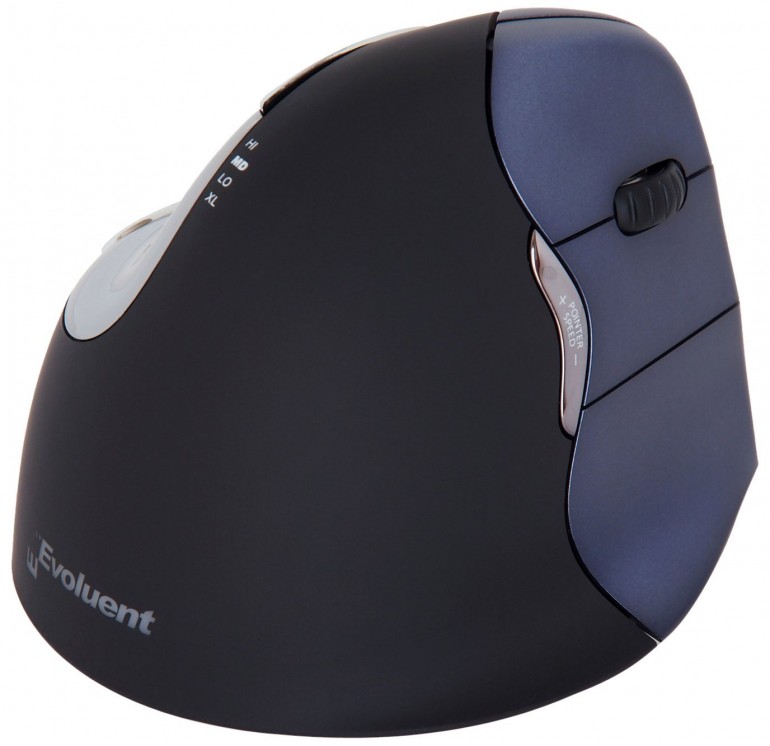
Airobic Quill mouse The Airobic Quill mouse features a wrist guard heel and sidewall which keeps user’s hands in a neutral position and allows for grip-less mouse movements.
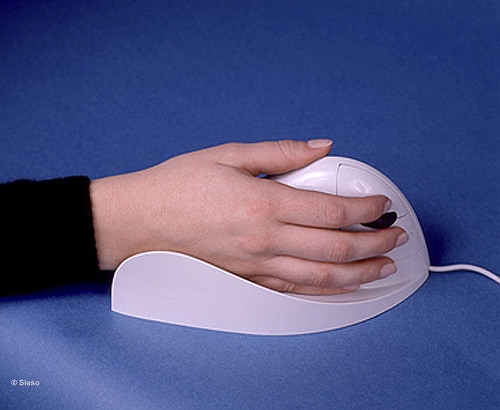
Penguin wired or wireless mouse The Penguin mouse can be used with the left or right hand, reducing repetitive stress injury.
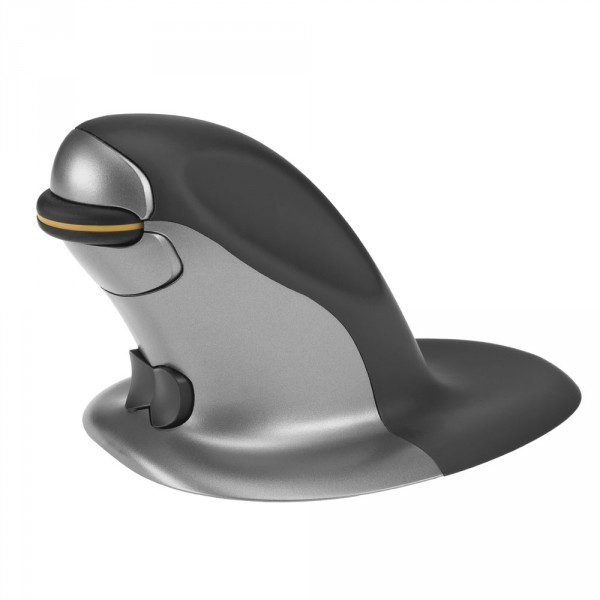
3M Optical wireless mouse This joystick mouse places the user’s hand in a comfortable position to avoid repetitive stress injury.
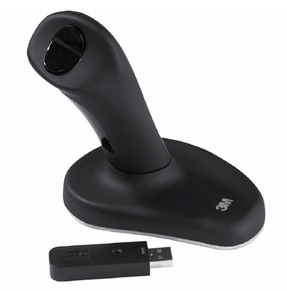
Trackballs and Roller Mice
Rollermouse Pro The Rollermouse Pro sits below the user’s keyboard, eliminating the need to reach for the mouse. The mouse can be used by both the left and right hand. Users control the cursor by moving the rollerbar with their fingertips.

Kensington Expert trackball mouse This is a large trackball mouse with a scroll ring, four customizable mouse buttons, and attachable wrist rest.
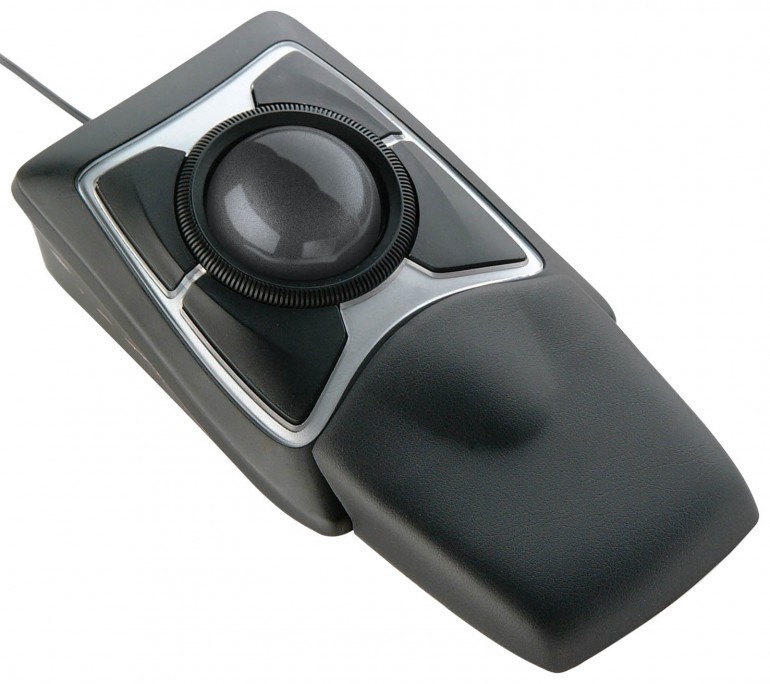
Mini trackball mouse Allows the user with limited reach, dexterity, or space and those experiencing pain from a standard mouse to control the cursor in a position that works for them.
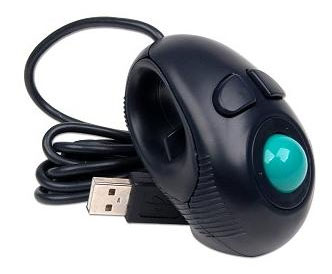
Trackpads/Touchpads
Adesso Smart Cat The Smart Cat is a touchpad mouse with four programmable hotlink buttons for user customization.
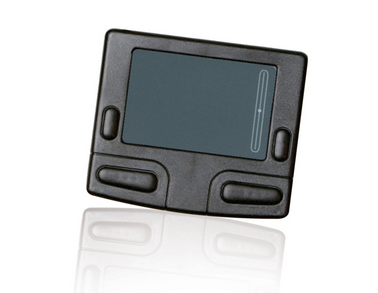
Remote Mouse The Remote Mouse turns your iPhone, iPad, or iPod into a wireless user-friendly remote control for your computer.
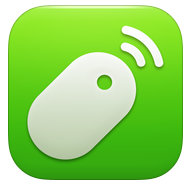
Joysticks
Optima wireless joystick This compact joystick does not require fine motor skills and responds to a light touch.
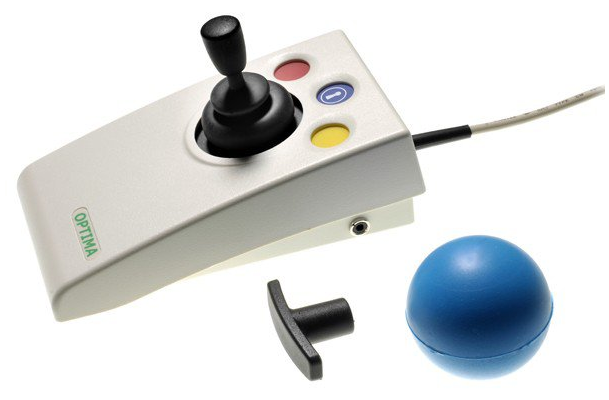
Tash joystick This joystick features buttons for left, right, and double click. It also has external switch jacks for alternative access.

Feet Mice/Switches
Footime foot mouse A mouse that is operated using the user’s foot. It features a slipper-shaped foot mouse and programmable pedal with buttons.

Advantage 3 Pedal foot switch This foot switch is ideal for offloading work from overused hands or fingers. The switches are used for triggering often used key actions such as “Shift”, “Space”, or “Tab.”
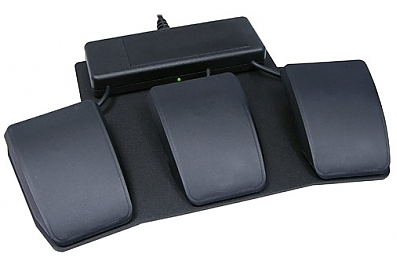
Mouth/Chin Pointing Mice
Jouse 3 A joystick operated mouse that users control with their mouth. With a sip and puff into the tube, users can perform the left and right click function.
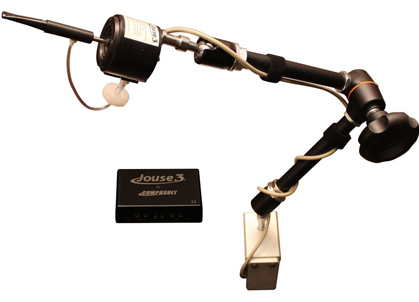
Tetra Mouse This is a dual joystick mouth or chin operated mouse that allows users to control the mouse pointer, left and right click, and scroll.
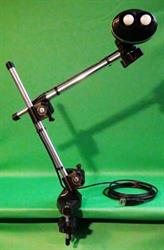
Head/Eye Tracking Mice
HeadMouse Extreme The HeadMouse translates natural movements of the user’s head into directly proportional movements of the computer mouse pointer.
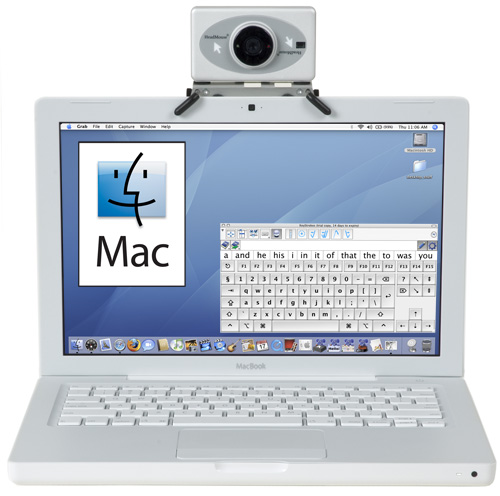
PCEyePro This device is a peripheral eye tracker that allows the user to perform all the functions of a mouse with their gaze.
Other Mice Alternatives to Consider
- Touch screens used with or without a stylus
- Mice used with an external switch such as the Infogrip switch adapted mouse
- Onscreen mice software such as Dragger 32
- Scanning software used with a wired or wireless switch such as Swifty
- Voice recognition software such as Dragon Naturally Speaking
If you have any questions, or if you would like to schedule a demonstration to explore different types of mice at an IPAT office feel free to contact IPAT and ask for an AT Consultant!


Great article!
I’d love to see you include Apple’s Magic Trackpad amongst your trackpad options. I used to use the Smart Cat but as soon as the Magic Trackpad came out I switched – it’s larger and understands multi-touch controls as well as single touch. I use it on a Mac but they’re also usable on Windows and because it’s Bluetooth there’s no cable to contend with. I vastly prefer it to the old Smart Cat!
Hello Trish,
I would love you to take a look at the Oystermouse. This is the only adjustable & ambidextrous mouse made. It’s ideal to meet your perfect stress free mousing position. If you truly want to mouse 100% stress free, you will want your wrist in the position of function (35 to 40 degree position). the best way to test this position is to totally relax your arm next to your side. look down, you’ll see that your thumb is lines up towards your front of your thigh. if you slowly bring your arm up to a 90 degree angle you will notice your hand in that position of function. Now, try and fit the top three mice into your totally relaxed hand… oh ho. cant do it, thus you will be twisting your tendons and ligaments which is bad news. Check out this mouse and keyboard: http://www.ergoprise.com/brands/OysterErgonomics.html
Peter – thank you for the share!